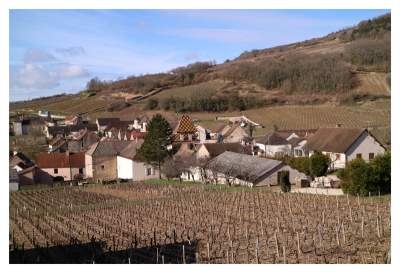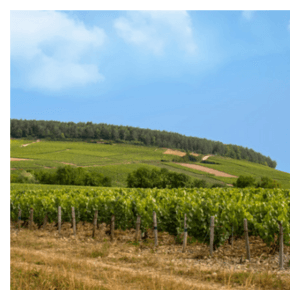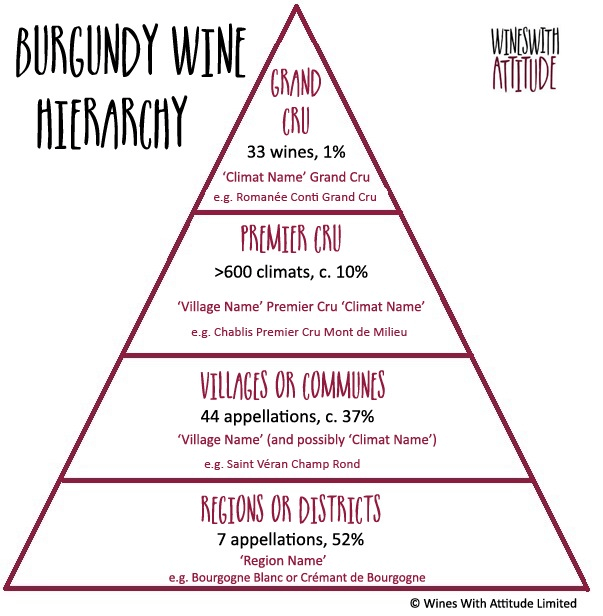No products in the basket.
The focus in the wine world at the beginning of each year is on Burgundy with the release of the latest vintage – in January 2018 this was the 2016 vintage release. It therefore seems like a good time to provide a very quick guide to Burgundy and its wines.
How are you supposed to make sense of Burgundy wines? Understanding Burgundy wine labels can seem impossible. Bourgogne as it is known in France is one of the oldest wine-producing regions in Europe and has a reputation for producing some of the world’s best wines. But it can be quite a daunting area with its complex labelling and numerous wine producers. Here’s Burgundy in a nutshell, all you need to know to start you off on Burgundy wines.

There are only really two grape varieties that you need to remember:
(1) Burgundy white wine means 100% Chardonnay and Burgundy red wine means 100% Pinot Noir
Chardonnay accounts for 48% of all wine grapes produced in the region and Pinot Noir 34%. The white grape, Aligoté, and the black grape, Gamay, are also grown. Gamay adds colour, texture and flavour to rosé Crémant de Bourgogne, the region’s Champagne-style sparkling wine and can be seen occasionally in still rosé wine.
Most of the wines produced are single varietals, i.e. just Chardonnay and just Pinot Noir, though in the usual French style this is not clear from the labels, unlike many New World wine labels which focus on the grape variety.
The fact that Burgundy labels can appear to be quite complicated gives a clue to the key fact about Burgundy wines – and that is that
(2) Terroir is key
Understanding this point can help you start to make sense of the hierarchy of the vineyards which can in turn help you decipher a Burgundy wine label. You can read more about terroir in my blog.
In summary Burgundy has a rich variety of soil, topography and mesoclimates in its vineyards and therefore vineyards that are literally a stone’s throw away from each other can produce incredibly different wines from the same grape variety. For example the different aspects of the vineyard sites contribute to differences in the wine.
It is the differences in terroir that led to the classification of Burgundy vineyards and consequently their wines.
(3) Burgundy vineyards are small and can have many owners
According to the Napoleonic Code a deceased’s estate had to be split equally between all children and therefore what were large wine estates have become smaller and smaller over the years – and the reason why you see so many wineries with similar family names.
‘Climat’ is the word used historically and exclusively in Burgundy to describe the different areas of terroir, effectively the vineyard plots like La Comme in Santenay Premier Cru La Comme – but remember that there can be a number of owners to each climat. ‘Clos’ is another word you might come across to describe a vineyard as in the infamous Clos Vougeot and this means a walled vineyard. You may also have seen the expression ‘lieu-dit’ which is increasingly used interchangeably with ‘climat’ mainly on Burgundy village wines but this is not quite correct as there are ‘lieux-dits’ all over France and a ‘climat’ might contain several ‘lieux-dits’ or just part of one.

Usually the vineyards have been named after a topographical feature e.g. Chablis Premier Cru Mont de Milieu is so named (translation ‘hill in the middle’) because the hill upon which the vineyard sits used to mark a boundary between the Chablis district which at the time was part of the Champagne region and the Fleys district which fell under the Duchy of Burgundy.
In 1855 (coincidentally or not, the same year that Bordeaux classified its wines albeit they based their classifications on producers), Burgundy set about differentiating its vineyards and the vineyards form the basis for the different Burgundy wine classifications; they continue in pretty much the same format today.
(4) Burgundy wine classifications are based on the vineyards
The diagram shows the hierarchy of wines in Burgundy with the number of appellations in and the percentage of total production for each category. To help make sense of Burgundy wine labels, I have included an indication of how the wine will be labelled together with an example of each.
Grand Cru – Just 1% of Burgundy wines and 33 vineyards have the Grand Cru classification e.g. Romanée Conti. As you would expect Grand Cru wines are the most expensive but also the most complex wines and will last for many years.
Premier Cru – Roughly 10% of the wine produced in Burgundy, more complex and long-lasting than Village wines.
Grand Cru and Premier Cru wines tend to be produced from vines on the slopes which get better sunlight and have better-draining soils.
Village or commune wines – 37% of the wine produced in Burgundy is named after certain villages or communes; wines must be produced from grapes from the relevant village and not necessarily from one specific vineyard. If however the grapes are all from one vineyard then the label can name the vineyard like Champ Rond. These wines are considered to have less complexity than Premier Cru wines but you can find some really fantastic wines especially from specific vineyards which are great value in comparison.
Regional Wines – over half of Burgundy wines fall into the more generic regional appellations like Bourgogne Blanc, Coteaux Bourguignons and Crémant de Bourgogne. The grapes for these wines can come from several different parts of the region.

Given the way that the land in Burgundy is split you can find the ‘same wine’ produced by several different owners e.g. I have previously stocked Domaine Thibert’s Saint Véran Champ Rond but you can find Saint Véran Champ Rond from other Domaines who own part of the Champ Rond vineyard in the Saint Véran appellation in the Mâconnais region of Burgundy. This doesn’t mean that all those Saint Véran Champ Rond wines will taste exactly the same; despite the terroir being identical the skill of the wine producer will have a huge influence and therefore…
(5) Individual wine producers are important
There are by the way more than 4000 domaines in the region so it can be difficult to find the really good ones like Christophe Thibert of Domaine Thibert pictured here with yours truly in the then new Domaine Thibert cellar.
Note also that as Burgundy wines are mostly pure varietals, vintage differences can be marked and so…
(6) Vintage is equally important

Burgundy produces c. 183 million bottles per year, which is 0.4% of global wine production. In value terms however Burgundy accounts for 2.8% which gives a clue to Burgundy prices.
50% of wine produced is exported; almost 20% of exports come to the UK.
61% of wine produced is white, 28% red, 1% rosé and 10% sparkling, the Crémant.
There is so much more to know about Burgundy and so in a later blog I will cover the five different sub-regions of Burgundy and their wine styles plus food pairing suggestions for Burgundy wines.
Sign up to my newsletter to receive exclusive offers and learn more about Wines With Attitude
© 2014-2024 Wines with Attitude Ltd | VAT Reg. No. 181 2419 22 | Registered in England 08918466 | Fiveways, 57-59 Hatfield Road, Potters Bar, Herts, EN6 1HS